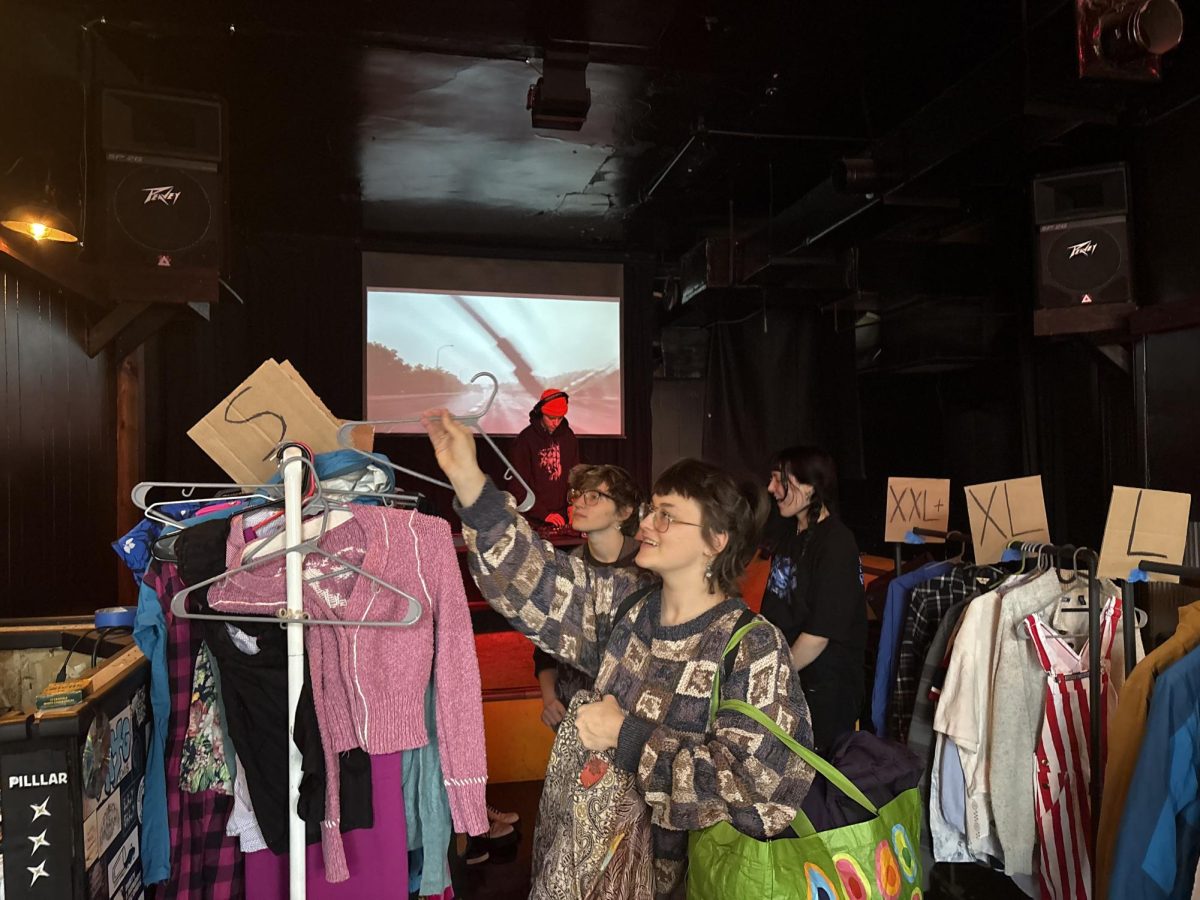When Terry Friedlander helped his friends move their daughter to a new home three years ago, he was struck by the amount of impressive artwork she had created while an art student.
What, he asked, did she plan on doing with such arresting pieces? Her answer gave birth to an idea and eventually an art gallery.
The Art Major, which Friedlander opened Aug. 4, is playing host to art pieces by students from the Twin Cities and beyond. Its mission statement – to show student artists’ creations year-round and help that work attract potential buyers – has drawn dozens of submissions that adorn the walls of 2404 Hennepin Ave.
A former printing shop, the historic building has been renovated with wooden floors and updated lighting. Friedlander has hung the gallery’s many pieces on a combination of steel piping and metal wires, a “retro-industrial” look that compliments the youthful and often edgy work.
Sitting in a makeshift office screened off just behind the gallery, Friedlander explained how a moving trip sparked an innovation that, only one month after opening, attracted a steady string of visitors last weekend.
When his friends’ daughter told him that she planned to move her pieces of artwork to her parents’ garage for storage, he was inspired.
“The proverbial light bulb went off,” Friedlander said. “How many other students have phenomenal pieces of art, and are relegated to mom’s basement or grandma’s attic?”
Friedlander’s philosophy is convincing: Why settle for a poster print at a chain retail store – a print potentially thousands of others will have in their homes as well – when original artwork can be made affordable to the consumer while simultaneously benefiting student artists?
“For me it’s an opportunity of getting art into the hands of everyday people,” he said. “The artists get a couple of dollars – or quite often more – and the acknowledgement that someone wanted their art in their home.”
Works of art sold at the gallery are accompanied by profiles and short biographies of their artists, including their philosophies, inspirations and influential people in their lives.
One person often cited as inspiration is Lucy Lamp, an instructor in the University’s art department. Some of Lamp’s sculptures, which she created as a graduate student, will be for sale at the gallery. She said she wanted to help the gallery get off the ground and will be encouraging her art students to submit their work.
“It’s helpful for students,” she said, “It’s hard for them to find a venue for their work. They’re giving students respect for their work.”
Friedlander said Lamp’s artwork is in keeping with the gallery’s mission: Any art produced by a student – even if one who graduated several years prior – is eligible for showing.
“Art doesn’t have a sell-by date,” Friedlander quipped.
The only stipulations are that artists allow the gallery a 90-day showing for each piece submitted. If the art doesn’t sell, it is returned to the artist. There are no exclusivity contracts, Friedlander explained, because one goal of the gallery is to give students exposure to art patrons who might further their careers at other galleries or in contract work.
Jessalyn Courtney, an art student at the University, said she saw an Internet advertisement for the gallery seeking submissions from students and decided to present her color photography – shots of bands and macro stills featuring close-ups of everyday objects. Her work is now on sale at the gallery.
“I think that this place is unique because they only want student art,” Courtney said. “They care about art students more than people out there already making a living on their artwork.”
Courtney emphasized the support she has received when writing the student profile that will accompany her artwork.
“One of the things I really wanted people to understand is that one of my great inspirations has been my best friends, and I wouldn’t have been able to do it without them,” she said.
Getting submissions such as Courtney’s was difficult at first, Friedlander explained, given that the gallery wasn’t yet open.
“It was kind of the chicken and egg thing,” Friedlander said. “We wanted to open and have art, but artists wanted us to be open before they submitted.”
Opening the gallery, meanwhile, “added a reality.”
Friedlander said surveys handed to customers have revealed that they consider the gallery a welcoming environment and the artwork and staff less intimidating than in other galleries. One customer called it “the most unpretentious gallery they’d ever been in,” Friedlander said.
“We don’t want the people to come in and be intimidated by the art – or by us,” he explained, jestingly stressing his staff’s humility. “We put our artwork up one nail at a time.”







